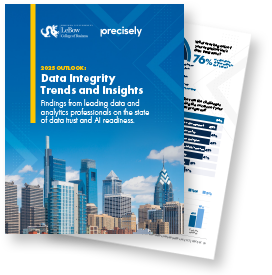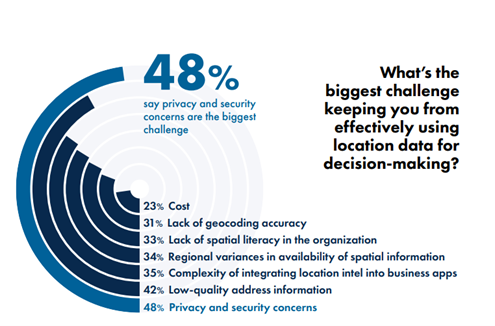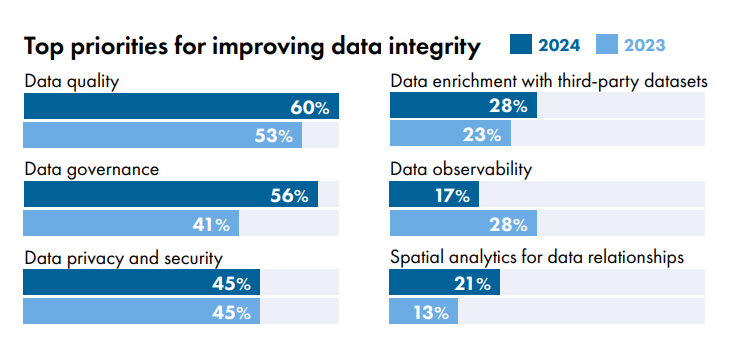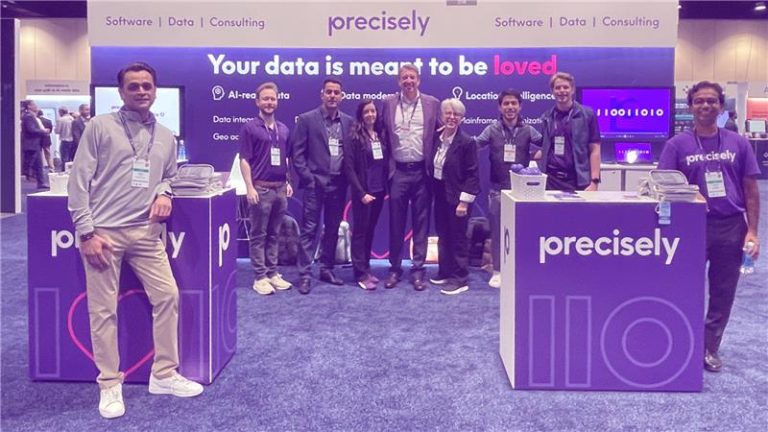
2025 Planning Insights: Data Enrichment and Location Intelligence Emerge

The 2025 Outlook: Data Integrity Trends and Insights report is here!
Precisely was proud to partner once again with Drexel University’s LeBow College of Business on this report, which is filled with actionable strategic insights from over 550 leading data and analytics professionals worldwide – and it’s going to be an essential resource as you plan your 2025 data strategy.
One major finding is that data enrichment and location intelligence have emerged as differentiators among organizations aggressively seeking innovation, operational efficiency, and competitive advantage in the marketplace. This year, we saw 62% growth in spatial analytics (from 13% in 2023 to 21% in 2024) and 22% growth in data enrichment (from 23% in 2023 to 28% in 2024) as priorities for data integrity initiatives.
As the Executive Vice President & GM of our Enrich business here at Precisely, I see first-hand how companies are using these technologies, and it is truly exciting. Internally, we experience their transformative power in action, and working with our supplier and customers, it’s clear there’s advancement and potential to unlock in 2025. I’ll share my thoughts on those opportunities later – first, let’s explore more of the report’s findings around data enrichment and location intelligence.
2025 Outlook: Essential Data Integrity Insights
What’s trending in trusted data and AI readiness for 2025? The results are in!

Location Intelligence Powers a Wide Range of Use Cases
Most businesses store information about their offices, customers, suppliers, and investments – and this data often includes addresses. Data about the world around those addresses is increasingly used to generate location intelligence that allows organizations to pursue operational efficiencies and competitive advantages.
To fully harness its potential for enhanced analytics, reporting, and informed decision-making, addresses must be of the highest quality. To achieve this integrity, tools are needed to clean up existing information and derive new location-based attributes through spatial analytics and data enrichment.
Our 2023 report noted that “Given organizations’ reliance on context for decision-making, we see data enrichment and spatial analytics as emerging business-critical technologies poised for growth.”
- In 2023, only 13% of respondents called out spatial analytics as a priority for data integrity initiatives. In 2024, that number jumped to 21%.
- In 2023, only 23% of respondents reported data enrichment as a data integrity priority. In 2024, that number grew to 28%.
Overall, these numbers represent a year-over-year increase of 62% for spatial analytics and 22% for data enrichment – demonstrating significant growth in both initiatives reported by this year’s respondents.

In this year’s survey, respondents share a wide range of uses for location intelligence:
- Validating, standardizing, and improving address data quality (34%)
- Optimizing product and service delivery (31%)
- Targeted marketing with customer demographics and segmentation (27%)
- Fraud detection (24%)
- Understanding service boundaries (17%)
- Performing site selection and optimization (15%)
- Assessing risk or processing claims (14%)
- Analyzing property valuation (13%)
Challenges Persist in Leveraging Location Intelligence to its Fullest Potential
The commercial applications of location intelligence are extensive – but they can’t succeed without location data that’s fit for purpose.
This is a significant challenge with addresses, one of the most common forms of location data. Thirty-seven percent (37%) of US respondents report low-quality address data as one of the top challenges inhibiting the use of location data.

Overall, privacy and security concerns are the most cited challenges (48%) keeping organizations from using location intelligence for decision-making. Growing legislation in the US and abroad increasingly protects personally identifiable information (PII), which could be derived from combining location with other data, like phone numbers.
Data Enrichment is on the Rise
Given the growth of data enrichment as a data integrity priority, let’s take a closer look at how organizations are enriching their internal data with third-party attributes.
The primary types of third-party data in use are:
- consumer demographics (29%)
- administrative, community, and industry boundaries (28%)
- customer segmentation (28%)
- address and property details (28%)

The use of third-party data for enrichment isn’t without its challenges, though. Respondents say that their most significant obstacles to using such data includes:
- cost (50%)
- data format consistency (45%)
- data quality (43%)
As the demand for data-driven decision-making grows, the importance of rich context and location intelligence can’t be underestimated. Organizations that have the tools they need to conduct spatial analysis and data enrichment will be able to derive the insights required to innovate and gain an advantage over their competitors.
The Rise of Connected Data Will Spark Major Innovation in 2025
As I mentioned earlier, we can expect even greater things to come in the world of data enrichment and location intelligence this year. I’ll wrap it up with this:
As data integrity becomes increasingly critical for organizations seeking to make informed decisions, data enrichment—augmenting internal data with curated third-party data—is fast emerging as a key strategy. This is especially true for companies looking to ensure that initiatives, such as AI and machine learning, are driven by relevant data and accurate location insights. Despite this, many organizations continue to struggle with the time-consuming and often manual process of accurately integrating third-party data.
In 2025, we’ll see the market evolve to meet this demand, introducing innovations aimed at simplifying the complexity of data enrichment and accelerating time-to-value. Organizations will increasingly seek trusted portfolios of third-party data that integrate seamlessly, creating a network of connected data with mapped relationships across datasets. Additionally, there will be a growing expectation for data providers to partner more effectively, offering a cohesive and connected ecosystem of enriched data.
Elevate Your 2025 Data Strategy
Want to learn more about the latest trends in location intelligence, data enrichment, and beyond? Get all the insights and inspiration you need for a winning data strategy – and see how your strategy stacks up to your peers’ – in the 2025 Outlook: Data Integrity Trends and Insights report.


